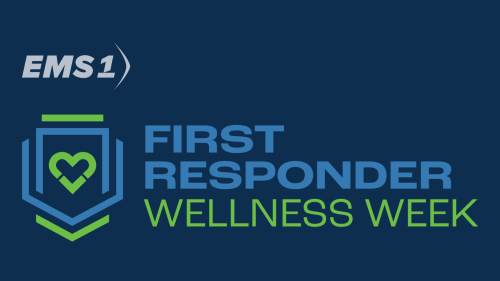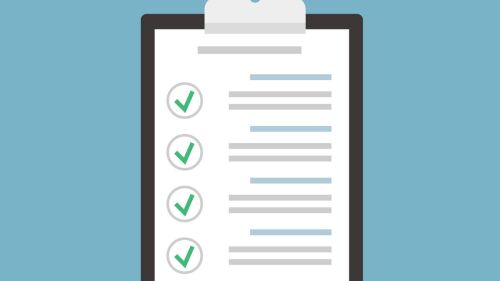By Corinne Flamer
Resilience is all about adapting and bouncing back from stress, trauma and adversity — challenges we face all too often in EMS. EMS professionals constantly operate in high-pressure, life-or-death situations, which can take a serious toll on mental well-being.
Building and maintaining mental health, physical wellness and resilience isn’t just a nice-to-have — it’s crucial for long-term mental health, reducing burnout and staying sharp on the job. A solid wellness program helps EMS providers process tough experiences, manage stress, and develop strong coping strategies so they can keep doing what they do best — saving lives — with clarity, confidence and compassion.
Following are 5 reasons why wellness programs stall.
1. A lack of defined goals, expectations
One of the fastest ways to derail a wellness/resilience program before it even gets out of the station is a lack of structure. You can’t just announce, “We’re starting a resilience program!” and expect it to run on its own. You need a solid foundation — a clear vision, dedicated leadership and a well-defined plan.
Define the program’s goals. What are you hoping to accomplish with your wellness program? EMS professionals are task-oriented and thrive on clear objectives. Build your program with that mindset, and make sure the goals are practical, measurable and relevant to the unique challenges of EMS work.
2. A lack of defined roles, responsibilities
A wellness program is only as strong as the people running it. Leadership and buy-in from influential team members are key. Ask yourself — are the people involved staying up to date on the latest research, skills and best practices? Make sure expectations are clear and that everyone has the training and knowledge they need to lead effectively.
Start by outlining the abilities, roles and responsibilities of everyone involved. Who’s leading the charge? Who’s responsible for which aspect of the program? Without this clarity, duties overlap, things fall through the cracks, accountability disappears, and the program loses momentum fast. Every program needs a mental health resilience officer (MHRO) to steer the ship, but depending on the size of the agency, it can be too big of a job for one person to do alone. Support roles are key to keeping tasks manageable.
The NAEMT Mental Health Resilience Officer (MHRO) course is a great place to start. If your team doesn’t understand the fundamentals of resilience or how to implement them, the program is doomed from the start. All team members and upper leadership should be familiar with the structure, even if only one person will be acting as the MHRO.
3. A lack of transparency
A successful organization runs on clear communication, and a wellness program is no different. In fact, transparency is even more critical here. People need to understand the purpose of the program, how it works, and what it can do for them. If they don’t trust the system, they won’t use it.
Be upfront about leadership decisions, wellness program goals and how success will be measured. Don’t let the program feel like some vague initiative running in the background. Actively share updates, provide data on progress and encourage open dialogue. A strong communication plan builds trust and keeps people engaged.
4. A lack of respect
Respect is earned, not given (thank you, Aretha Franklin).
In a wellness program, respect goes beyond just basic professionalism. It means building trust — especially with the MHRO and resilience team. If people don’t trust the program leaders to be reliable, committed and confidential, the teams you are trying to help won’t participate. This trust also needs to be set from the top down. Upper management and leadership need to demonstrate trust in the program and the team.
Respect also means acknowledging different perspectives. Not everyone in EMS shares the same beliefs, culture or mindset, and that’s OK. A strong program creates a space where all employees feel valued and supported, regardless of personal differences. If people don’t believe in those running the program, they won’t buy into the program itself.
5. A lack of time and money
Wouldn’t it be great if we could just snap our fingers and have a fully funded, fully functional wellness program? Unfortunately, that’s not how it works.
Success requires time, effort and resources. A strong program isn’t something that can be thrown together on the side — it needs dedicated leadership, and someone committed to giving 100% effort from day 1. Without this, the program will lose steam fast.
Funding is another major roadblock. EMS budgets are tight, and wellness programs often take a backseat to operational costs and new technologies. But resilience training is gaining traction, and there’s money out there. Look into fundraising, grants and donations to help support and sustain your program. There is money available for mental health initiatives — you just must tap into them.
WATCH | Customizing care: How tailored resilience programs can transform providers’ wellbeing
Wellness program success: The bottom line
A wellness program isn’t just a box to check — it’s a necessary investment in the mental health and well-being of EMS professionals. If your program is stalling, it’s likely due to one (or more) of these key issues:
● No clear goals or expectations
● Lack of dedicated leadership, team expertise and defined roles
● Poor communication and transparency
● Weak trust and respect within the organization
● Insufficient time and funding
Address these challenges head-on, and you’ll build a wellness program that works — one that keeps EMS providers strong, supported and ready to handle the intense demands of their jobs. Investing in resilience isn’t just about reducing burnout or PTSD — it’s about ensuring that the people who take care of everyone else are taken care of, too.
ABOUT THE AUTHOR
Corinne Flammer has over 30 years of EMS experience as a paramedic, educator and FTO. Corrine is a sought-after speaker, author and podcast guest, as she shares her passion for first responder mental health. She holds a Master’s degree in Psychology focusing on Trauma and Crisis Response.
















